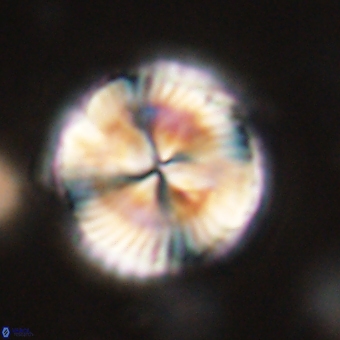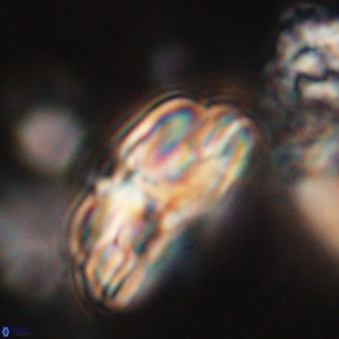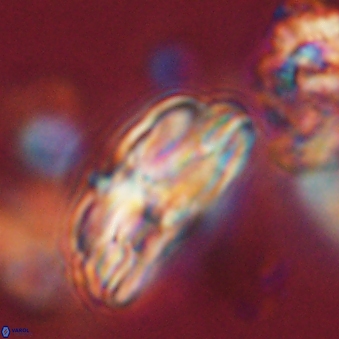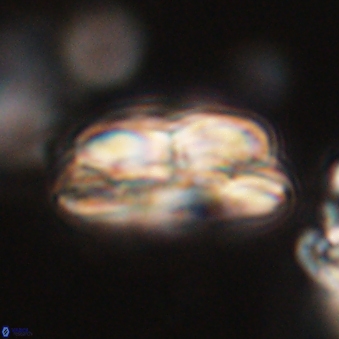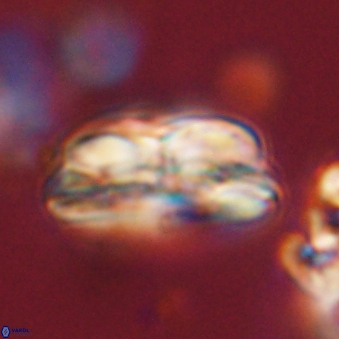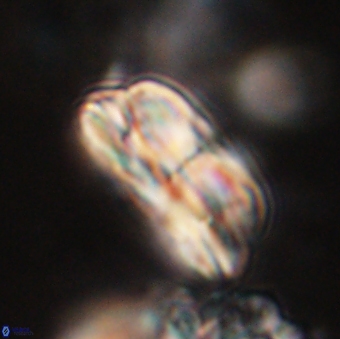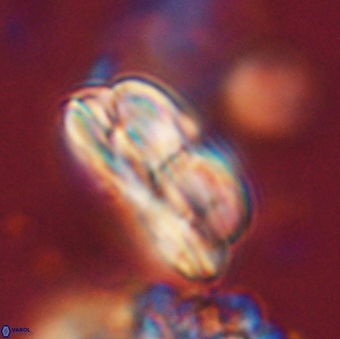Bomolithus dydimolofous
Set number: 2324
-
1
-
2
-
3
-
4
-
5
-
6
-
7
-
8
-
9
-
10
-
11
-
12
-
13
-
14
-
15
-
16
-
17
-
18
-
19
-
20
10µm
Bomolithus dydimolofous Bowman & Varol, 2021
The moderately low column appears dome-shaped, resembling two “rounded hills” in the side view. The column and discs are occupied by a narrow canal, which is closed by a central plug. The discs are of equal diameter. The column and discs possess a similar number of segments (about 32–40).
From Greek didymo lofous, twin hills—referring to the rounded shape of the column observed in side-view.
Column height: 2.33μm, Column diameter: 8.89μm; Disc diameter:10.30μm.
Large (7.0–11.0μm) species of Bomolithus comprised of two discs and a column. The discs are of equal diameter and appear flat (observed in the side-view). The moderately low column is very wide (e.g. wider than higher) and seems like two “rounded hills” in the side-view. A central plug closes the narrow canal that occupies the column and disc boundary.
In plan view, the discs and column appear shades of white, and the plug is smooth, with unresolvable segments. A similar number of segments (about 32–40) constitute the discs and column. In the distal view, the extinction lines are dextrogyre, whereas the extinction lines are laevogyre in the proximal view. When viewed using a gypsum plate, the horizontal axis of the coccolith lies within the blue sector on the distal/column-side. Still, the vertical axis of the coccolith lies within the blue sector on the proximal/disc side. The discs and column appear birefringent in plan and side views.
The column's unique appearance is the diagnostic characteristic of the species. In the side-view, Bomolithus dydimolofous possesses a dome-shaped column, whereas Bomolithus elegans has a cylindrical column with a cone-like distal depression. Moreover, the median disc of Bomolithus dydimolofous appears lath-like, but the median disc of Bomolithus elegans is wedge-like. In plan-view, the number of segments representing Bomolithus dydimolofous (about 32–40) is greater than the total segments constituting Bomolithus elegans (about 24–32). The segments of the discs and column are of similar width in Bomolithus dydimolofous, whereas the disc segments are distinctly wider than the column segments in Bomolithus elegans.
Bowman, A. R. & Varol, O. 2021. A Taxonomic Revision of Heliolithaceae - Applications in Resolving the Problematic Calcareous Nannofossil Biostratigraphy of the Paleocene. In: M. Montenary, M. (Ed.). Calcareous nannofossil biostratigraphy of the Stratigraphy and timescales. 6: 43-223.
